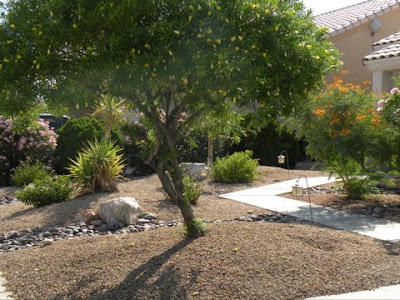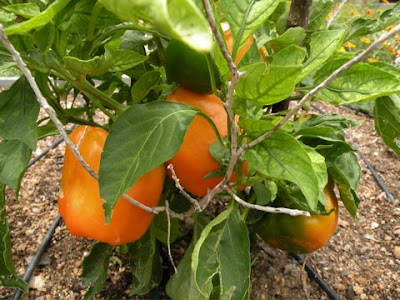 Agave desmettiana is one of my favorites because it make an enormous number of pups which is a good thing because it is not reliably hardy in our area. If they don't winter over then I can easily replace them with those growing in pots.
Agave desmettiana is one of my favorites because it make an enormous number of pups which is a good thing because it is not reliably hardy in our area. If they don't winter over then I can easily replace them with those growing in pots. These ones were all put in the ground this spring. I may try to protect them this winter as they are not too large to cover.
These ones were all put in the ground this spring. I may try to protect them this winter as they are not too large to cover.My first agave was Agave parryi. I fell in love with its tight blue rigid leaves. I think it cost about $40 so it was expensive. However, it was going to give me years of joy, or so I thought.
 I planted it in the ground in 2002. By early 2004 I noticed that in the center there was a rather tight narrow and pointed rosette of leaves. Oh no, I thought, it's going to flower! I love the candelabra out there in the desert scene but not in my garden- yet. It was to be. Each day the flower stalk grew by at least a foot. No wonder the plants dies after flowering (monocarpic).
I planted it in the ground in 2002. By early 2004 I noticed that in the center there was a rather tight narrow and pointed rosette of leaves. Oh no, I thought, it's going to flower! I love the candelabra out there in the desert scene but not in my garden- yet. It was to be. Each day the flower stalk grew by at least a foot. No wonder the plants dies after flowering (monocarpic). Finally the stalk reached its full height and it burst into flower. Every bee in the neighborhood was there. I saved the seeds and some were allowed to fall on the ground but none of them germinated. There were no pups and no bulbils and the plant duly died. I have read that aside from pups which grow from the rhizome, agaves will reproduce by forming bulbils in the axils of the flower stalk. I had never seen this until walking around my son's neighborhood in Phoenix I espied and agave with pups and bulbils.
Finally the stalk reached its full height and it burst into flower. Every bee in the neighborhood was there. I saved the seeds and some were allowed to fall on the ground but none of them germinated. There were no pups and no bulbils and the plant duly died. I have read that aside from pups which grow from the rhizome, agaves will reproduce by forming bulbils in the axils of the flower stalk. I had never seen this until walking around my son's neighborhood in Phoenix I espied and agave with pups and bulbils.
 Bulbils galore! Certainly would like some of those. I don't know what variety it is but I'm sure it would do well in a pot.
Bulbils galore! Certainly would like some of those. I don't know what variety it is but I'm sure it would do well in a pot.Now, seeing these bulbils reminds me of a photo I took of an Echinacea plant in my garden. I decided it was a mutation but maybe the Echinacea is mimicing the Agave.



























































